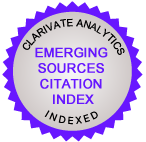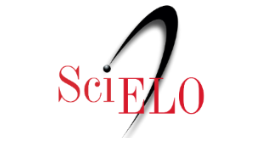La transformación de las prácticas y rutinas profesionales en el periodismo contemporáneo: estudio de caso
-
Wenceslao Castañares
 wcast@ccinf.ucm.es
wcast@ccinf.ucm.es
-
Marina Mantini
 marina.mantini@gmail.com
marina.mantini@gmail.com
Downloads
Abstract
El objetivo de esta investigación es constatar los cambios operados en las prácticas y rutinas profesionales tradicionales de los periodistas y cómo influyen estos cambios en la agenda mediática. Para ello se ha utilizados una doble metodología: el análisis del discurso aplicado a textos periodísticos y la entrevista en profundidad. Las conclusiones ponen de manifiesto las dificultades de los periodistas para adaptarse a la nueva situación.Palabras Clave
Asociación para la investigación de Medios de Comunicación (AIMC) 2014. Resumen general EGM. Octubre 2013- Mayor 2014.
Asociación de la Prensa de Madrid (APM) (2013). Informe anual de la profesión Periodística. Madrid: Asociación de la Prensa de Madrid.
Aladro Vico, E. (2013): Las teorías profesionales y las 5 crisis del periodismo. CIC. Cuadernos de Información y Comunicación, 18, pp. 69-81.
Basset, L. (2013). El último que apague la luz. Barcelona: Taurus
Boczkowski, P. & Peer, L. (2011). The Choice Gap: The Divergent Online News Preferences of Journalists and Consumers. Journal of Communication, 61 (5), pp. 857–876
Boczkowski, P, Mitchelstein, E. & Walter, M. (2011). Convergence Across Divergence: Understanding the Gap in the Online News Choices of Journalists and Consumers in Western Europe and Latin America. Communication Research 38 (3), pp. 376–396
Cáceres, Zapatero, D. (2011): La construcción social de la realidad: el papel de los profesionales en el establecimiento de la agenda temática. Estudios sobre el mensaje periodístico, 17 (2), pp. 303-324.
Carrera, P. (2012). Periodismo y social media. En M. P. Diezhandino, El periodista en la encrucijada pp. 113-132. Barcelona: Fundación Telefónica/Ariel.
Díaz Nosty, Bernardo (2013). La prensa en el nuevo ecosistema informativo. Barcelona: Ariel/Fundación Telefónica
Diezhandino, M. P. et al. (2007). Periodismo en la era de internet. Barcelona: Fundación Telefónica/Ariel
Diezhandino, M. P. et al (2012). El periodista en la encrucijada. Barcelona: Fundación Telefónica/Ariel
Ezra Park, R. (2013). La moral y las noticias. CIC. Cuadernos de Información y Comunicación, 18, pp. 25-38.
Frankenberg, L.; Lozano, J. C. (2010). Rutinas, valores y condicionantes en la producción de la noticia: el testimonio de cuatro directores de medios informativos en Monterrey, México. Comunicación y sociedad, XXIII, 1, pp. 175-204
Gitlin, T. (2011). A surfeit of crisis: circulation, revenue, attention, authority, and deference pp. 91-102. En McChesney R. and Pickard, V. (eds.): Will the last reporter please turn out the lights. New York: The New Press
Gitlin, T. (2013): Un cúmulo de crisis: circulación, ingresos, atención, autoridad y confianza. CIC. Cuadernos de Información y Comunicación, 18, pp. 11-23.
Izquierdo, J.M. (2013). ¿Para qué servimos los periodistas? Madrid: Los libros de la catarata.
Mantini, Marina (2014). El enfoque de análisis de los issues: el caso de la educación en las narraciones de la esfera pública mediatizada. En CIC. Cuadernos de Información y Comunicación 19, pp. 233-251.
Marcus, G.E. (1995). Ethnography in/of the World System: The Emergence of Multi-Sited Ethnography”. Annual Review of Anthropology, 24, pp. 95–117.
Marres, N. S. (2005): No Issue, No Public. Democratic Deficits after the Displacement of Politics. Tesis doctoral. Amsterdam: Digital Academic Repository of the University of Amsterdam (UvA). Recuperado 25 de octubre de 2014 de <http://dare.uva.nl/en>.
McChesney, Robert W. (2013). Aquello es ahora y esto fue entonces: Walter Lippman y la crisis del periodismo. CIC. Cuadernos de Información y Comunicación, 18, pp. 39-49.
Montagut, A. (2012). Newpaper. Cómo la revolución digital transforma la prensa. Barcelona: Edisto.
Oriella Pr Network (2013). The New Normal for News. Have Global Media Changed Forever? Recuperado el 14 de noviembre de 2014 de <http://www.oriellaprnetwork.com/sites/default/files/research/Brands2 Life_ODJS_v4.pdf>
Peñamarín (2014). Esfera pública y construcción del mundo común. Relato dislocado. En CIC. Cuadernos de Información y Comunicación. 19, pp. 103-124.
Pew Research Center‘s Project for Excellence in Journalism (2013). The State of the News Media 2013. An Annual Report on American Journalism. Recuperado el 14 de noviembre de 2014 de <http://journalistsresource.org/studies/society/news-media/news-media-2013-pew-research-center>.
Pew Research Center‘s Project for Excellence in Journalism (2014). The State of the News Media 2014. An Annual Report on American Journalism. Recuperado el 14 de noviembre de 2014 de
<http://www.journalism.org/packages/state-of-the-news-media-2014>
Riego, C. del (2013). El periodista busca su futuro, CIC. Cuadernos de Información y Comunicación, 18, pp. 57-67.
Waldman, Steven (2011): The information needs of communities. Recuperado el 14 de noviembre de 2014 de <http://transition.fcc.gov/osp/inc-report/The_Information_ Needs_of_Communities.pdf.>
Similar Articles
- María Angulo Egea, Construction of the discourse on the crisis: the evicted people. Analysis of reports and biographical sketches (2012-2015) , Perspectivas de la Comunicación: Vol. 11 No. 1 (2018): january - august
- Yánder Castillo Salina, Viviana Muniz Zúniga, The international subjects in relation between medias and audiences in Cuba: longitudinal case study , Perspectivas de la Comunicación: Vol. 10 No. 2 (2017): Setiembre - Diciembre
- Hilda Gabriela Hernández Flores, Dra., Verónica Sánchez Hernández, Lic., Andrea Estupiñán Villanueva, CaD, Government responsible communication in crisis situations: Frida Sofia‘s case , Perspectivas de la Comunicación: Vol. 12 No. 2 (2019): July - December
- Yánder Castillo Salina, Viviana Muñiz Zúñiga, Alicia de la Caridad Martínez Tena, The agenda-setting theory. Epistemological criticism and qualitative deepening from anthropological study. , Perspectivas de la Comunicación: Vol. 14 No. 1 (2021): January - June
- Xavier Ginesta, José Luis Rojas Torrijos, Nahuel Ivan Faedo, Sports journalists and North American investors in LaLiga: disintermediation and "disneyization" in RCD Mallorca , Perspectivas de la Comunicación: Vol. 16 No. 1 (2023): January - June
- Alfredo Arceo Vacas, Rafael Barberá González, Sergio Álvarez Sánchez, The context of perception generated on Twitter for the Spanish electoral debates of December 2015 and June 2016: treatment of the credibility factors by the candidates , Perspectivas de la Comunicación: Vol. 13 No. 2 (2020): July-December
- Florian Lippert, Watching Europe watching its borders. Cultural self-reflection and surveillance in films about migration [Bilingual edition: Spanish – English] , Perspectivas de la Comunicación: Vol. 11 No. 1 (2018): january - august
- Laura Rosenberg, The debate on the legalization of abortion in the Argentinian electoral campaign in 2019. An analysis of the coverage of the leading digital media in the country. , Perspectivas de la Comunicación: Vol. 14 No. 1 (2021): January - June
- Natalia Raimondo Anselmino, Alejandro Sambrana, Ana Laura Cardoso, José Rostagno, Paratextual and paralinguistic resources in the fanpages of the Argentine newspapers Clarín and La Nación. Attributes of press discourse in social networking sites , Perspectivas de la Comunicación: Vol. 12 No. 2 (2019): July - December
- Baal Ulises Delupi, Carnival, all my life! Artivistic Resistance Speeches in Barcelona: The Case of Enmedio , Perspectivas de la Comunicación: Vol. 15 No. 1 (2022): January - June
1 2 3 4 5 6 7 8 9 10 11 12 > >>
You may also start an advanced similarity search for this article.
Downloads
Published
How to Cite
Issue
Section
License
- Proposed policy to offer Open Access Journals
Authors who publish with this journal agree to the following terms:
a) Authors retain copyright and grant the journal right of first publication with the work simultaneously licensed under a Creative Commons Attribution Attribution (CC -BY 4.0) ![]() that allows others to share the work with an acknowledgement of the work's authorship and initial publication in this journal.
that allows others to share the work with an acknowledgement of the work's authorship and initial publication in this journal.
b) Authors are able to adopt licensing agreements for the non-exclusive distribution of the journal's published version of the work (for example, to post it to an institutional repositories or publish it in a monograph), with an acknowledgement of its initial publication in this journal.
c) Authors are allowed and encouraged to post their work online (For example, in institutional repositories or on their website) prior to and during the submission process, as it can lead to productive exchanges and increase the citation of published work (See The Effect of Open Access).











